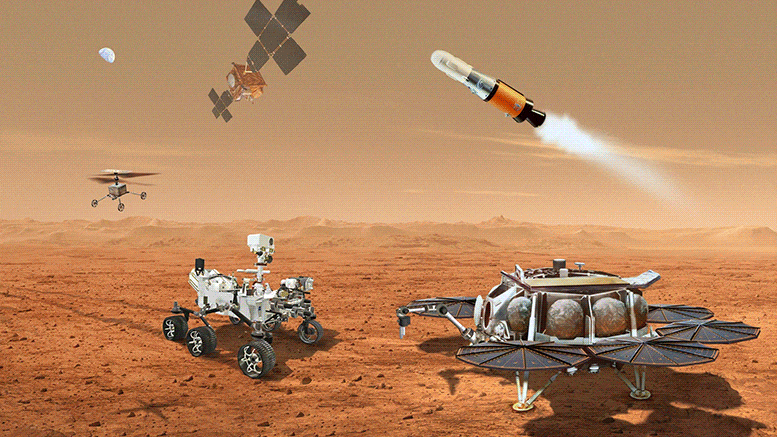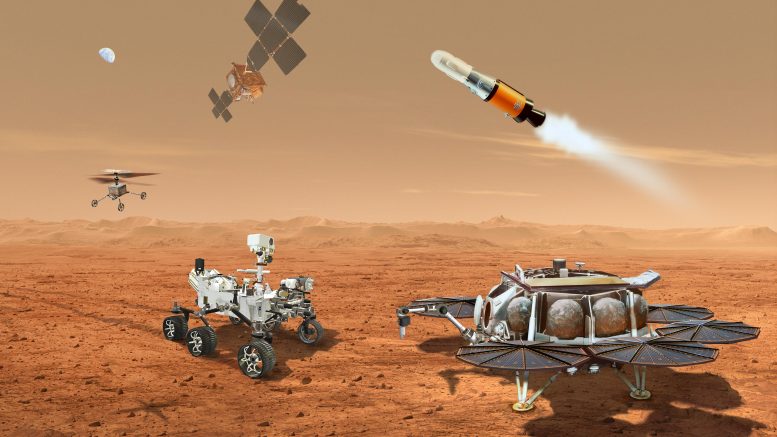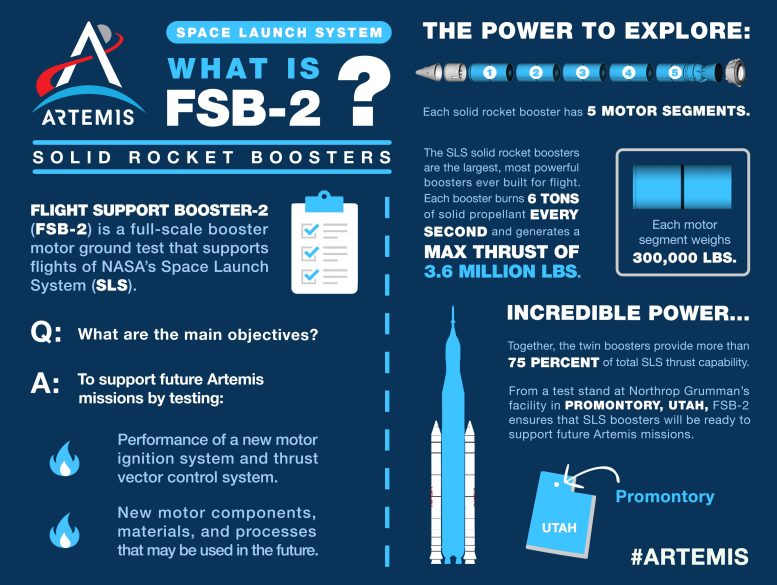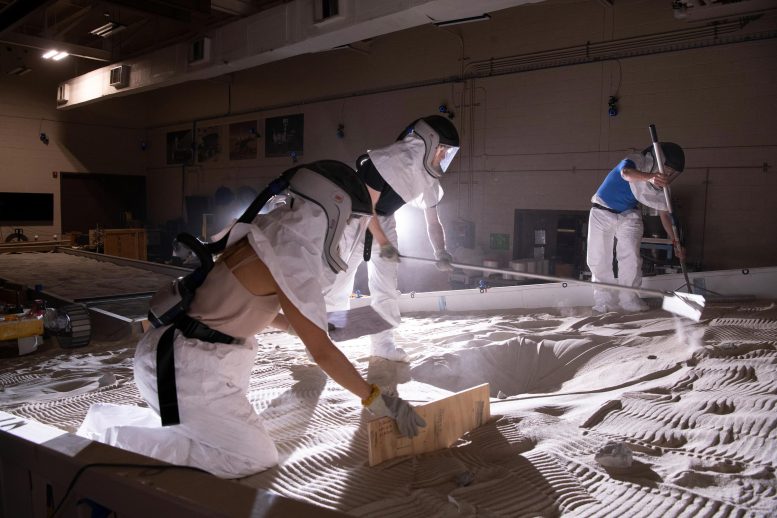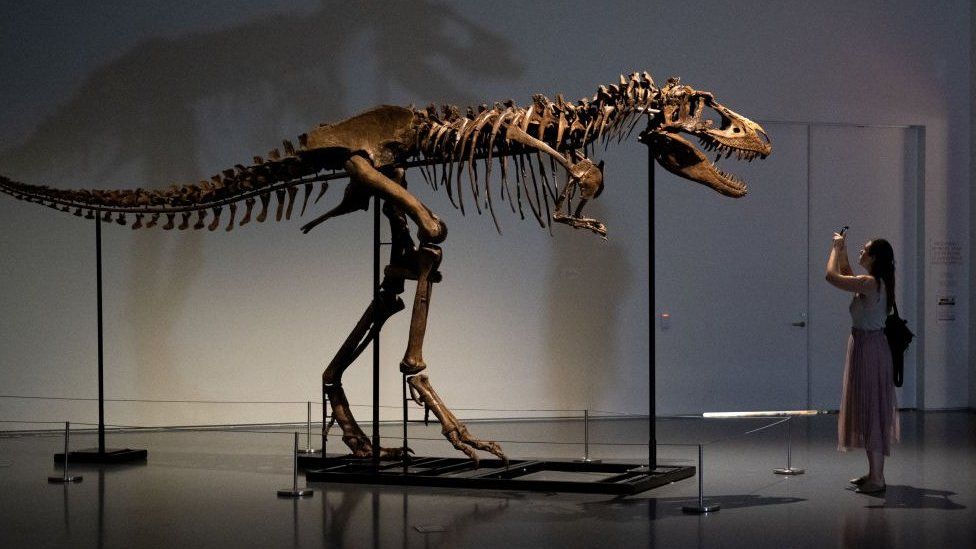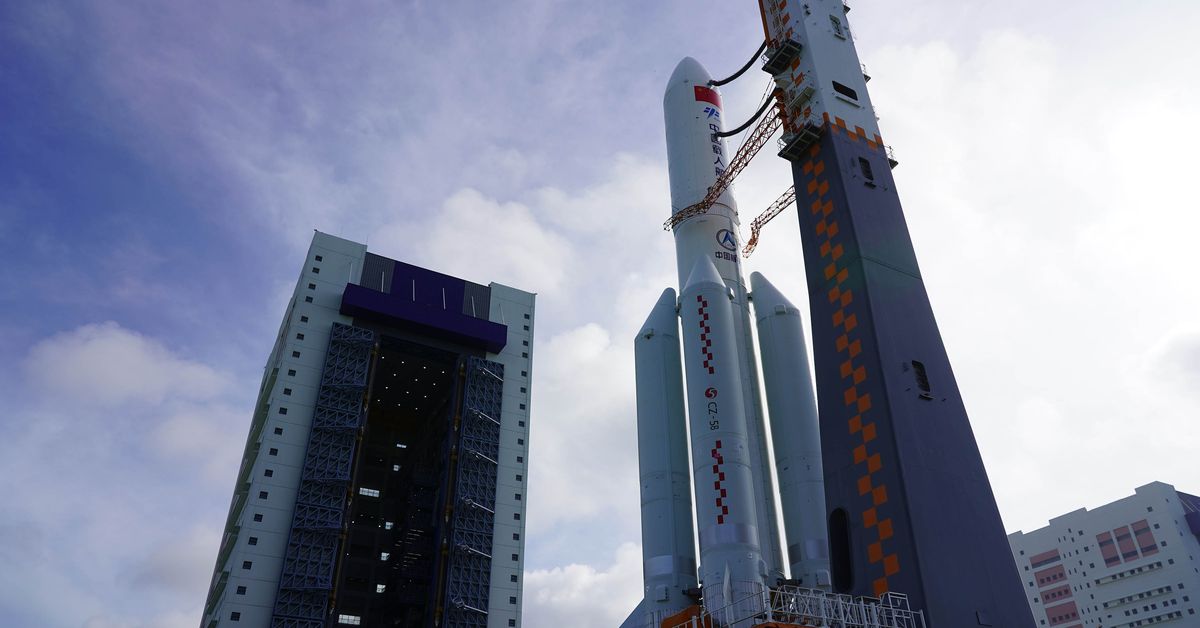Sometime this weekend, a massive booster from a Chinese rocket will beginan uncontrolled fall back to Earth from space — and because of its considerable size and weight, parts of it may survive the descent through our planet’s atmosphere and hit the ground. The chances of the rocket hitting anyone and killing them are exceedingly rare, but a similar falling Chinese rocket last year sparkedmajor concern worldwide, which means this rocket will probably do the same.
The booster is part of a Long March 5B rocket, which launched on July 24th, sending a new module into orbit for China’s growing Tiangong space station. After the giant rocket reaches space, it sheds a fairly massive part of itself: its core booster. This booster sticks around in orbit, lapping the planet before eventually falling back to Earth. Since the rocket part is more than 100 feet long and more than 22 tons in weight, it’s possible that up to 9 tons’ worth of material could survive the fall.
Space trackers are doing their best to predict exactly when and where the Long March 5B booster will come down. The situation closely mimics that of last year’s global scare over an uncontrolled Chinese rocket that fell back to Earth, as well as a similar uncontrolled reentry in 2020. Both of those instances also involved a core booster from China’s Long March 5B, which does not have the capability of disposing of itself in a controlled manner. Fortunately, last year, the rocket came down in the sparsely populated Indian Ocean, but in 2020, that falling rocket did dump debris off of the Ivory Coast, sending metal pipes and other objects into villages without causing any injuries.
Still, the risk to the average human from this year’s rocket is so low that it should not keep anyone up at night. In fact, for any one person on Earth, there are six chances in 10 trillion that a part of this rocket will hit you and cause some kind of casualty or injury, according to the Aerospace Corporation, a nonprofit that does space research and development, as well as provide technical guidance on spaceflight. But, the fact that space trackers have to continue to deal with this kind of issue without knowing when and where the rocket will come down is frustrating.
“Why are we worried? Well, it did cause property damage the last time, and people are having to do preparation as a result,” Ted Muelhaupt, a space traffic expert and consultant with the Aerospace Corporations’ corporate chief engineer’s office, said during a presser about the rocket. “Furthermore, this is not needed. We have the technology to not have this problem.”
In the United States and Europe, the rule for space operators is that if there is going to be some kind of uncontrolled reentry of space debris into Earth’s atmosphere, there must be a lower than 1 in 10,000 chance that the falling object will cause some kind of casualty, or injury, on the ground. It’s a particularly high bar to clear, which is why US and European missions have to be vigilant about how they dispose of the rockets they send into space. “Basically, once you’re done delivering your payload, you turn your rocket around, fire the engine, and drive it back into the ocean somewhere, usually someplace where there’s no population,” Marlon Sorge, a space debris expert and technical fellow with the Aerospace Corporation, said. “You do that, and you have pretty much mitigated the risk right there.”
Controlled disposal is something that most launch providers throughout the world do already. SpaceX and the United Launch Alliance, for instance, purposefully deposit parts of their rockets over the ocean after they launch to space. Plus, the core of SpaceX’s Falcon 9 rocket is famous for actually flying back to Earth and landing upright — either on a drone ship or landing pad — following its flights. The core booster of the Long March 5B doesn’t have that capability. Once it launches into orbit, the engines on the rocket core can’t really reignite. “They’re designed for a single burn,” Jonathan McDowell, an astrophysicist at the Harvard Center for Astrophysics and space tracking expert, tells The Verge. “And so this thing just burns once and then switches off, and it’s dead.” Then we just have to wait for it to fall back to Earth as its orbit decays over time.
The Aerospace Corporation estimates that there is between a 1 in 1,000 and 1 in 230 risk of a casualty from the falling Long March 5B booster. That’s 10 times above the 1 in 10,000 threshold, which is why there is heightened vigilance around this specific case. And whenever China pulls a stunt like this, the US isn’t particularly happy about it. “Spacefaring nations must minimize the risks to people and property on Earth of reentries of space objects and maximize transparency regarding those operations,” NASA administrator Bill Nelson said when the 2021 Long March 5B fell. “It is clear that China is failing to meet responsible standards regarding their space debris.”
China seemingly took note of the criticism. During this most recent launch, one Chinese official during the CGTN launch livestream mentioned that they had made improvements to dispose of the booster after launch. “The last segment, or the core segment, once it [enters] into the orbit, it also [works] as a spacecraft,” Xu Yansong, former director for international cooperation at the China National Space Administration, said during the livestream. “So we’ll have to bring it back safely and in a controlled manner. So one of the first missions was unable to do that, but later on, we improve our technologies. And so what we call the passivation of the last stage has been conducted, so we can safely bring back the last fuselage.”
However, it does not seem like anything has changed since the last scare. In fact, the European Union’s Space Surveillance and Tracking network has found that the booster is tumbling through space, indicating there is no control over the object. So we’ll be going through the whole process of predicting where it will come down all over again. As of now, the European Union, the US Space Force, and the Aerospace Corporation’s best guesses of when it will come down is sometime late Saturday night or early Sunday morning. As for where it will come down, it’ll be somewhere between 41.5 degrees North and 41.5 degrees South. That means about 1 billion who live north and south of those lines have zero risk. (Boston and parts of Tasmania — congratulations, you’re right outside the zone.) But 88 percent of the human population lives within that range, according to the Aerospace Corporation.
Predictions will get more precise with each passing day as we get closer to Sunday, and the Aerospace Corporation is continually updating its predictions here. The European Union is keeping track as well, as is the Space Force. As for what to expect when the rocket comes down? Based on past experience, the debris could spread over an area hundreds of miles in length along the rocket’s orbital track. Some pieces, depending on their size and weight, may hit the ground slowly, while others might hit the ground fast, at speeds that could reachhundreds of miles per hour. Ultimately, it’s a guessing game, and we may not know much about this event until the rocket actually comes down. “The history of reentering things has been a history of continuing surprise,” says McDowell. “How much actually does survive reentry? Sometimes more survived than you might have initially expected.”
But even though there is slightly more risk than usual with this falling rocket, it’s important to keep things in perspective. “The risk to any given individual in any given year from getting conked in the head by a piece of space debris is one in 100 billion,” Muelhaupt said. “You’re 80,000 times more likely to get hit by lightning than you are by space debris. But this doesn’t mean that this is a good thing to do.”
So enjoy this new round of falling rocket uncertainty. Once it’s over, we’ll probably have to do it all again. There’s another Long March 5B launch tentatively scheduled for this fall.
Adblock test (Why?)
Article From & Read More ( An uncontrolled Chinese rocket booster will fall to Earth this weekend - The Verge )
https://ift.tt/8NXjyYM
Science
/cloudfront-us-east-2.images.arcpublishing.com/reuters/3CIZ75CKFBKL7GKWIVJNDV4D2U.jpg)
